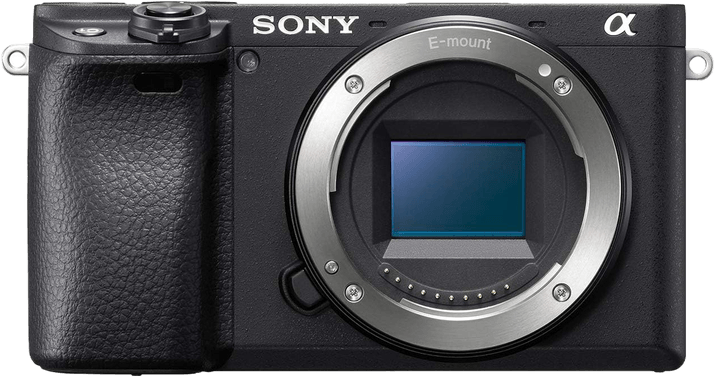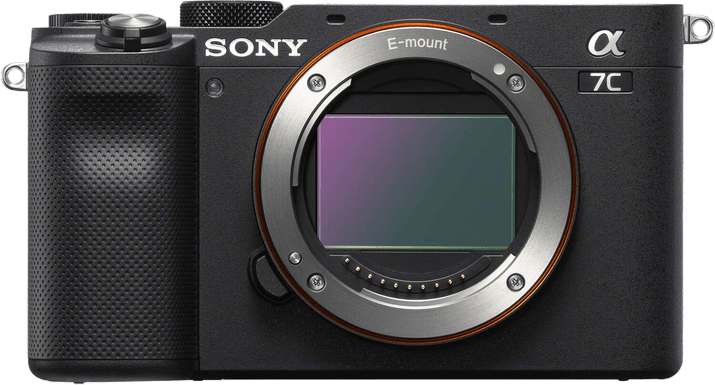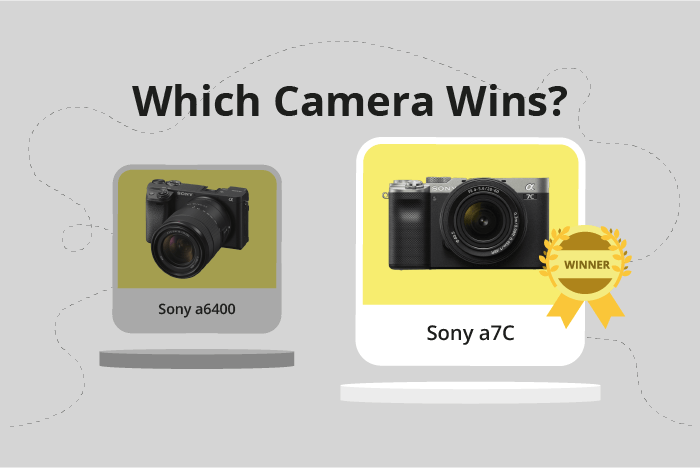Sony a6400 vs a7C Comparison
Sony a6400

Sony a7C

The Sony a7C takes the lead with a score of 78/100, while the Sony a6400 trails behind at 70/100. Both cameras are mirrorless, announced in 2019 and 2020 respectively. They share similar dimensions, with the a7C measuring 124 x 71 x 60mm and the a6400 at 120 x 67 x 60mm. However, the a7C is slightly heavier at 509g, compared to the a6400’s 403g.
The higher score of the Sony a7C is justified by its superior performance and features. At a launch price of $1799, it offers more value for the money than the Sony a6400, which is priced at $900. The a7C’s additional weight might also suggest a more robust build quality.
On the other hand, the Sony a6400’s lower score does not necessarily mean it is a worse camera. It is lighter and slightly smaller, making it more portable for those who prioritize compactness. Furthermore, its lower price point could make it a more attractive option for budget-conscious consumers.
Taking the scores and specifications into account, the Sony a7C emerges as the better camera. However, the Sony a6400 still has its merits and could be the ideal choice for some users, particularly those who value portability and affordability.
Sony a6400 vs a7C Overview and Optics
The Sony a7C outperforms the Sony a6400 in optics with a score of 80/100, compared to the a6400’s 68/100. Both cameras share similarities in specifications, including 24.2 megapixels, CMOS sensor type, and Bionz X processor. However, the a7C has superior features that contribute to its higher score.
The a7C benefits from a full-frame sensor, which results in better image quality and low-light performance compared to the a6400’s APS-C sensor. The DXOMARK score for the a7C’s sensor is 95, significantly higher than the a6400’s 83. This difference in sensor quality has a noticeable impact on image quality. The a7C also features image stabilization, which helps reduce camera shake and produce sharper images, especially in low light or when using telephoto lenses. The a6400 lacks this feature.
On the other hand, the a6400 has a slightly faster shooting speed of 11 frames per second, compared to the a7C’s 10 frames per second. This advantage may be beneficial for action or sports photography, where capturing fast-moving subjects is crucial. Both cameras use the same lens mount, with the a6400 using Sony E lenses and the a7C using Sony FE lenses.
Considering the optics, the Sony a7C is the better choice due to its full-frame sensor, higher DXOMARK score, and image stabilization. These features result in improved image quality and better low-light performance. The a6400’s advantage in shooting speed may be useful in specific situations, but for overall optics performance, the a7C is the clear winner.
Sony a6400 vs a7C Video Performance
The Sony a6400 outperforms the Sony a7C in terms of video capabilities, with a video score of 91/100 compared to the a7C’s score of 70/100. Both cameras share some common specifications, including 4K maximum video resolution and 3840 x 2160 video dimensions. Additionally, both cameras have built-in time-lapse functionality.
The Sony a6400’s higher video score is due to its superior maximum video frame rate of 120fps, compared to the Sony a7C’s 30fps. This difference allows the a6400 to capture smoother and more detailed slow-motion footage, making it a better choice for videographers who require high-quality slow-motion capabilities.
While the Sony a7C has a lower video score, it still offers solid video performance with its 4K resolution and built-in time-lapse functionality. However, its lower maximum video frame rate of 30fps means it may not be the ideal choice for those who need to capture fast action or create smooth slow-motion footage.
In terms of video capabilities, the Sony a6400 is the clear winner due to its higher maximum video frame rate, which enables superior slow-motion performance. On the other hand, the Sony a7C remains a viable option for those who prioritize 4K resolution and time-lapse functionality without the need for high frame rates. Ultimately, the choice between these two cameras will depend on the specific video requirements of the user.
Sony a6400 vs a7C Features and Benefits
The Sony a6400 and Sony a7C both score 81/100 in features, making them equal in this aspect. Both cameras share several specifications, including a 3-inch screen size, 921,600-dot screen resolution, touchscreen capabilities, flip screens, no GPS, and both Wi-Fi and Bluetooth connectivity.
Comparing the two cameras, the Sony a6400 has some advantages. It is a lighter camera, making it more portable and easier to carry around for extended periods. Additionally, the a6400 has a faster burst shooting rate, allowing for better capturing of fast-moving subjects. However, the Sony a7C has its strengths as well. The a7C features a full-frame sensor, providing superior image quality and better low-light performance compared to the a6400’s APS-C sensor. The a7C also offers in-body image stabilization, ensuring steadier shots and reducing the need for a tripod in certain situations.
In terms of features, both the Sony a6400 and the Sony a7C have their respective advantages. The a6400 is lighter and has a faster burst shooting rate, while the a7C boasts a full-frame sensor and in-body image stabilization. The shared features, such as screen size, resolution, and connectivity options, make both cameras versatile and user-friendly. Ultimately, the choice between the two depends on the specific needs and preferences of the photographer.
Sony a6400 vs a7C Storage and Battery
The Sony a7C outperforms the Sony a6400 in storage and battery, with a score of 45/100 compared to the a6400’s 37/100. Both cameras have one memory card slot and support USB charging. They also accept SD, SDHC, and SDXC memory cards. The a7C, however, is compatible with UHS-II cards, which offer faster read and write speeds than the UHS-I cards supported by the a6400.
The a7C’s battery life is significantly longer, providing 740 shots compared to the a6400’s 410 shots. This advantage stems from the use of the NP-FZ100 battery in the a7C, whereas the a6400 uses the NP-FW50 battery. The a6400 does not have any advantages in this category.
Considering these factors, the Sony a7C is the superior choice for storage and battery performance. Its compatibility with faster memory cards and longer battery life make it a more reliable and efficient option for photographers and videographers.
Alternatives to the Sony a6400 and a7C
Are you still undecided about which camera is right for you? Have a look at these popular comparisons that feature the Sony a6400 or the Sony a7C:

